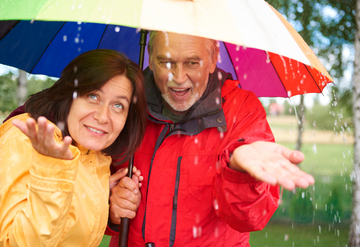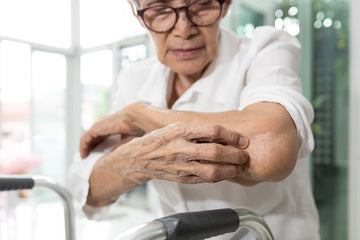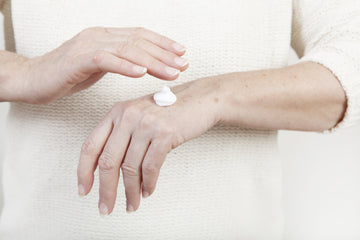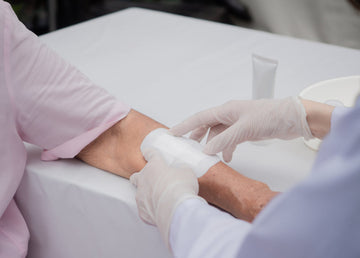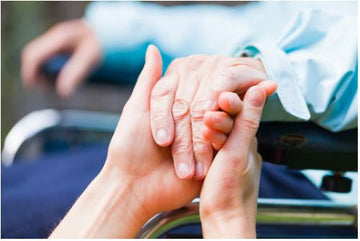
A warm blanket, fluffy muffler, steaming hot tea, are all the things that make winters, wonderful. But our skin often dreads this cold season. It is constantly exposed to the environment, dealing with harsh climate changes, pollution and whatnot. It all depends on the skin type which climate suits better; at times humid climate may suit the skin better, at times warm climate. However, with drop in temperatures, skin hydration goes for a toss irrespective of the skin type.
In winter, the humidity levels are low, there is a lack of moisture in the air, which leads to more dryness in the surroundings. The moisture barrier of our skin, scientifically called as stratum corneum is the most exposed and tends to lose moisture to the external environment. This is what makes the skin dry. In extreme cases, in addition to dryness there can also be cracking or itchiness, or even redness.
Special care for special conditions
While most of us equip ourselves with the best of moisturizers there are certain skin conditions for which a moisturizer won’t suffice, especially if you are a caregiver to an elder person. Just like our body undergoes changes as we age, our skin changes too. When it comes to old people, their skin is fragile compared to the skin of younger people. Being fragile, it is more prone to skin damage not only in winters but otherwise too.
Most often we are vigilant about overall health, nutritional needs, medicinal routine etc. about the elderly at home, but we often miss out on their skin health. If you know someone who is bed-ridden, if you know someone who is wheel-chair ridden see to it that their skin health is also prioritized.

Bedsores. Ever heard of this?
Medically speaking, bedsores or pressure sores or pressure ulcers are sores or ulcers that develop on the skin when the skin is subjected to prolonged pressure. This situation is common in people who have to lie on a bed or sit in a wheelchair due to medical conditions like paralysis, stroke, surgeries etc. This condition can be extremely painful but as a caretaker with a certain level of awareness and vigilance, this can be tackled appropriately.
How to identify bedsores?
Because of winters, the skin is now even more frail and dry. The prolonged pressure on the skin due to lying down or sitting in one position affects the blood circulation and the skin turn purple. Watch out for any changes in color, texture whenever you or the nurse are repositioning the patient. There are various stages of bedsores and with every stage, the intensity & severity goes up drastically. The best way to deal with bedsores is to prevent them from happening.
How to effectively manage bedsores?
- Doctors believe that the best way to manage bedsores is to take preventive measures because of the complications associated with treatment.
- Repositioning and turning of the patient at regular intervals
- Using soft mattress or padding will bring in more comfort
- Keeping the area clean and hygienic
Adult Diaper Rashes. Heard of this before?
Using barrier gels that prevent friction between the skin and the surface go a long way in prevent bedsores from occurring.
People who face bladder control issues, medically called as incontinence often have to wear diapers. You may find it surprising, but cold weather and overactive bladder have a direct relation “ yes, you heard this right, there are chances you will urinate more in winter. And this could be more problematic for elder who have to wear adult diapers!
Frequent urination, accumulation of urine & faucal matter, unhygienic personal habits all these can lead to rashes & infections in the diaper prone region. So, in you have an elderly person in your home who wears diapers, be mindful that he or she may be suffering from diaper rashes.
How to identify a diaper rash in adults?
Pink to red patches in the diaper prone area is the first visible sign. Dryness, itchiness or pain may also occur in some cases. Wearing a diaper can be embarrassing and hence the discomfort that comes from diaper rashes may make them silent sufferers. Whatever be the type of diaper, cotton or synthetic, the fragile skin of elderly people is prone to diaper rashes.
How to effectively manage adult diaper rashes?
- Keep the diaper area clean and hygienic
- Wash with gentle soap, dry it every time a diaper is changed
- Make sure the diaper material is soft and comfortable
- Ensure that the size of the diaper is not too tight or not too lose
- Using barrier gels with natural oil have been proven to be useful in effectively treating and managing diaper rashes
Skin health is an indicator of overall health
Winter or no winter, it’s crucial to remember that skin health is an indicator of overall health. In elderly population, the amount of care and caution needs to be a little more.
- Hydration is the key.
Drinking enough water helps maintain the suppleness of the skin. The amount of water every individual need is different. Hydration can be improved by drinking fluids like soups or smoothies as well. But make sure you don’t skip water.
- External hydration is also necessary just like internal hydration.
Depending on the type of skin dry, very dry, mix-type, choose a moisturizer that best suits you. Using mild emollients or moisturizers regularly helps to keep skin dryness at bay. Try using fragrance-free variants to avoid any kind of allergies.
- Use lukewarm water while bathing.
We would love a hot water bath on a chili day. But unlike lukewarm water, hot water showers may strip the skin of its moisture. Lukewarm water retains the skin’s natural oils and thus locks the moisture inside.
- Artificial humidifiers can be used.
Depending on the diversity of the region, the intensity of cold varies from place to place. In cases where the weather is extremely cold, don’t shy away from using humidifiers. They come a long way in maintaining the comfortable condition for the skin
- Comfortable, warm clothing.
Needless to say, it’s important to wear warm clothes. Make sure the clothes are also comfortable and not too tight or too lose. Also, stay indoors whenever possible and in case going out is mandatory, make sure the ears, neck and face are as bundled up as the other parts of the body.

- Eat wholesome meals
Last but not the least, having wholesome nutritious meals, seasonal fruits maintain the right balance of fibers, minerals and vitamins that help to build maintain the suppleness, smoothness and moisture of the skin in the long run.
